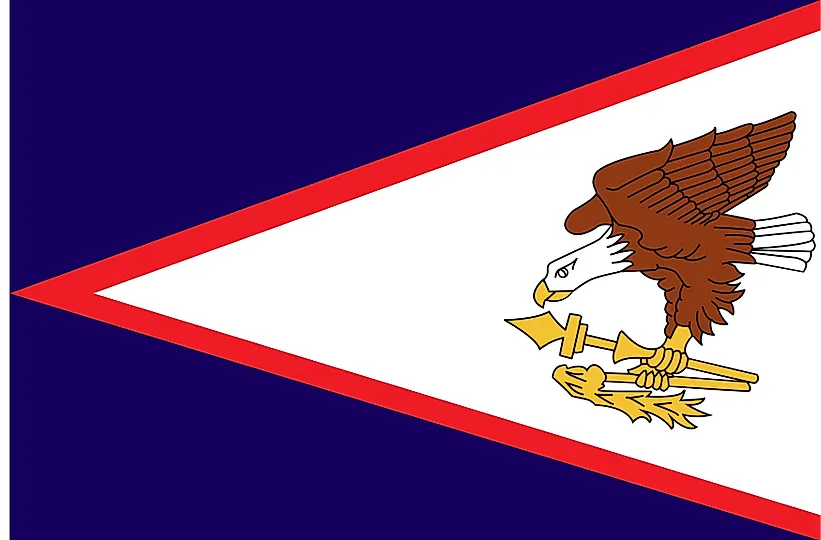
American Samoa
| Continent | Oceania |
| Capital | Pago Pago |
| Population | 54,194 |
| GDP | $711.00 Million |
| GDP per Capita | $13,000 |
| Dialing Code | +1-684 |
| ISO Code (2-letter) | AS |
| ISO Code (3-letter) | ASM |
American Samoa Landscapes






About American Samoa
Welcome to American Samoa, a captivating unincorporated territory of the United States nestled in the heart of the South Pacific Ocean. This tropical paradise comprises seven stunning islands where Polynesian culture thrives amidst breathtaking landscapes. With approximately 55,000 residents inhabiting just 199 square kilometers of land, American Samoa offers a unique blend of traditional Samoan values and American influences. The territory’s strategic location has made it an important crossroads in the Pacific, where ancient traditions and modern developments create a fascinating cultural tapestry.
Geographic Features and Natural Beauty
American Samoa’s geography is a spectacular showcase of volcanic origins, featuring dramatic peaks that rise majestically from crystal-clear waters. The main island of Tutuila is dominated by lush, rugged mountains, including Mount Alava and Rainmaker Mountain, which create a stunning backdrop to pristine beaches and protected harbors. The territory’s most iconic landmark, Pola Island, stands as a testament to the powerful volcanic forces that shaped these islands.
The National Park of American Samoa, the only U.S. national park south of the equator, preserves the territory’s unique ecosystems across three islands. This protected area encompasses everything from rainforests to coral reefs, hosting an incredible diversity of plant and animal species. The park’s pristine coral reefs are home to over 950 fish species and 250 coral species, making it a paradise for marine enthusiasts.
The Manu’a Islands group, consisting of Ofu, Olosega, and Ta’u, offers some of the most untouched natural beauty in the Pacific. Ofu Beach, with its perfect white sand and turquoise waters, is often ranked among the most beautiful beaches in the world, while the massive sea cliffs of Ta’u Island rise dramatically from the ocean to heights of over 900 meters.
Cultural Heritage and Traditions
Samoan culture forms the bedrock of life in American Samoa, where the traditional social system known as “Fa’a Samoa” (the Samoan Way) continues to guide community life. This cultural framework, centered around family, respect for elders, and community service, has remained remarkably resilient despite centuries of external influences.
Village life revolves around the ‘aiga (extended family) and is led by matai (chiefs) who make decisions for the community. Traditional ceremonies and gatherings take place in the fale tele (meeting houses), open-sided structures that symbolize the transparency and inclusiveness of Samoan governance.
The territory’s artistic traditions are equally vibrant, from the intricate patterns of siapo (bark cloth) to the powerful movements of traditional dance. Tattooing holds special significance, with the pe’a (male tattoo) and malu (female tattoo) representing important cultural milestones. These traditional arts have been carefully preserved and continue to be practiced with pride.
Historical Journey
American Samoa’s history reflects the broader patterns of Polynesian settlement and European contact in the Pacific. Archaeological evidence suggests that Polynesians first arrived on these islands around 3,000 years ago, establishing one of the oldest cultures in Oceania.
European explorers first encountered the Samoan islands in the 18th century, with the Dutch explorer Jacob Roggeveen making the first documented European contact in 1722. The 19th century brought increased foreign interest, with Germany, Great Britain, and the United States all vying for influence in the region.
The division of the Samoan archipelago occurred in 1899, with the eastern islands coming under American control and the western islands falling under German administration (later becoming the independent nation of Samoa). American Samoa officially became a U.S. territory in 1900, beginning a unique relationship that continues to this day.
Modern Economic Landscape
Today’s American Samoa balances traditional practices with modern economic development. The territory’s economy centers around tuna fishing and processing, with the StarKist cannery being one of the largest employers. Tourism, though less developed than in other Pacific destinations, offers significant potential for growth, particularly eco-tourism focused on the territory’s natural beauty.
Agriculture remains important at the local level, with families cultivating traditional crops like taro, breadfruit, and coconuts. The territory also receives significant financial support from the U.S. federal government, which helps maintain infrastructure and public services.
American Samoans serve in the U.S. military at rates higher than most U.S. states, reflecting the strong patriotic ties to the United States despite the territory’s unique political status.
International Relations and Global Position
As a U.S. territory, American Samoa’s international relations are primarily conducted through the United States. However, the territory maintains its own cultural connections throughout the Pacific, particularly with independent Samoa and other Polynesian nations.
American Samoa participates in regional organizations like the Pacific Community and competes separately from the United States in international sporting events, including the Olympics and Pacific Games, highlighting its distinct cultural identity.
Did You Know?
• American Samoa is home to the world’s largest tuna cannery, processing over 1,000 tons of tuna daily?
• Despite being U.S. nationals, people born in American Samoa are not automatically U.S. citizens, a unique status among all U.S. territories?
• American football players of Samoan descent are 56 times more likely to play in the NFL than Americans of other ethnicities, making American Samoa a remarkable talent pool for the sport?
Conclusion
American Samoa stands as a vibrant example of cultural preservation in a changing world. This Pacific jewel continues to honor its Polynesian heritage while embracing elements of modern life. From its volcanic peaks to its vibrant coral reefs, from traditional village councils to tuna processing plants, American Samoa offers a fascinating glimpse into a society that values both tradition and progress. The territory’s unique status and cultural resilience make it a truly special place in the vast expanse of the Pacific Ocean.